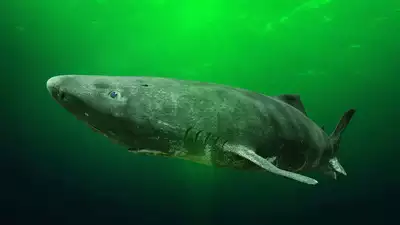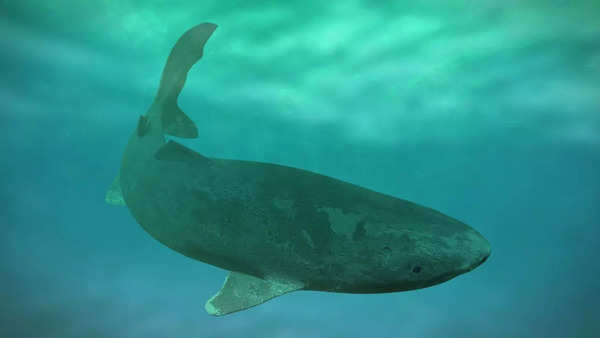
The mysteries of the natural world are of great interest to scientists and laymen alike. In these mysteries, the long life some models stand out as particularly interesting. Although most animals have short lifespans, some species defy the odds, living for hundreds of years. One remarkable creature is Greenland sharkwhose life can be extended up to 500 years.
The desire to understand the secret behind the extraordinary longevity has led researchers to examine various factors, including genetics, environment, and physiology. The Greenland shark, known scientifically as Somniosus microcephalus, lives in the deep, cold waters of the Arctic and North Atlantic Oceans. These sharks can be found at depths of up to 2,647 meters (8,684 feet), where the temperature hovers around 29 degrees Fahrenheit (less than 1.8 degrees Celsius).
One of the main factors contributing to the longevity of the Greenland shark is its incredible metabolism. Unlike most animals, whose metabolic rate decreases with age, the Greenland shark metabolism persisting remarkably throughout his life. This unique metabolic trait was demonstrated in a study conducted at Society of Experimental Biology Meeting in Prague in July 2024. Ewan Camplissondoctoral student and University of Manchesterled the research, which included enzyme analysis on tissue samples from sharks of various ages.

A representative image
The findings show that the metabolic rate in the muscles of the Greenland shark does not show significant changes in age. This stability in metabolic rate is very important to maintain cellular activity and reducing overall cellular damage over time. In many animals, a decrease in metabolic rate leads to reduced energy production, slower repair and regeneration of cells, and an increase in cellular waste products. The Greenland shark’s ability to maintain a constant metabolic rate helps it avoid these age-related problems.
Another factor that contributes to the longevity of the Greenland shark is that it grows rapidly at puberty. These sharks grow at a rapid rate, reaching sexual maturity only at about 150 years of age. This long period of growth and development allows sharks to devote more energy to planning and organizing, and -make their lives better. However, this slow-growing population also makes the species vulnerable to environmental changes and human activities, because over time they able to adapt quickly.
The cold and deep waters that the Greenland shark lives in also play a major role in its longevity. Extreme cold slows down the shark’s metabolic rate, reducing fatigue in its body over time. This adaptation to cold environments is common among long-lived species, as it helps conserve energy and reduce cellular damage.
The remarkable longevity of the Greenland shark not only fascinates scientists but also has implications for it. human health. By studying the unique metabolic and physiological characteristics of these sharks, researchers hope to gain insight into the process of aging and longevity. Understanding how the Greenland shark maintains its cellular function and avoids age-related diseases may lead to breakthroughs anti aging treatment and human heart health.
Why are uterine fibroids growing and how to control this growth
#secret #Greenland #sharks #500year #life #Indian #period